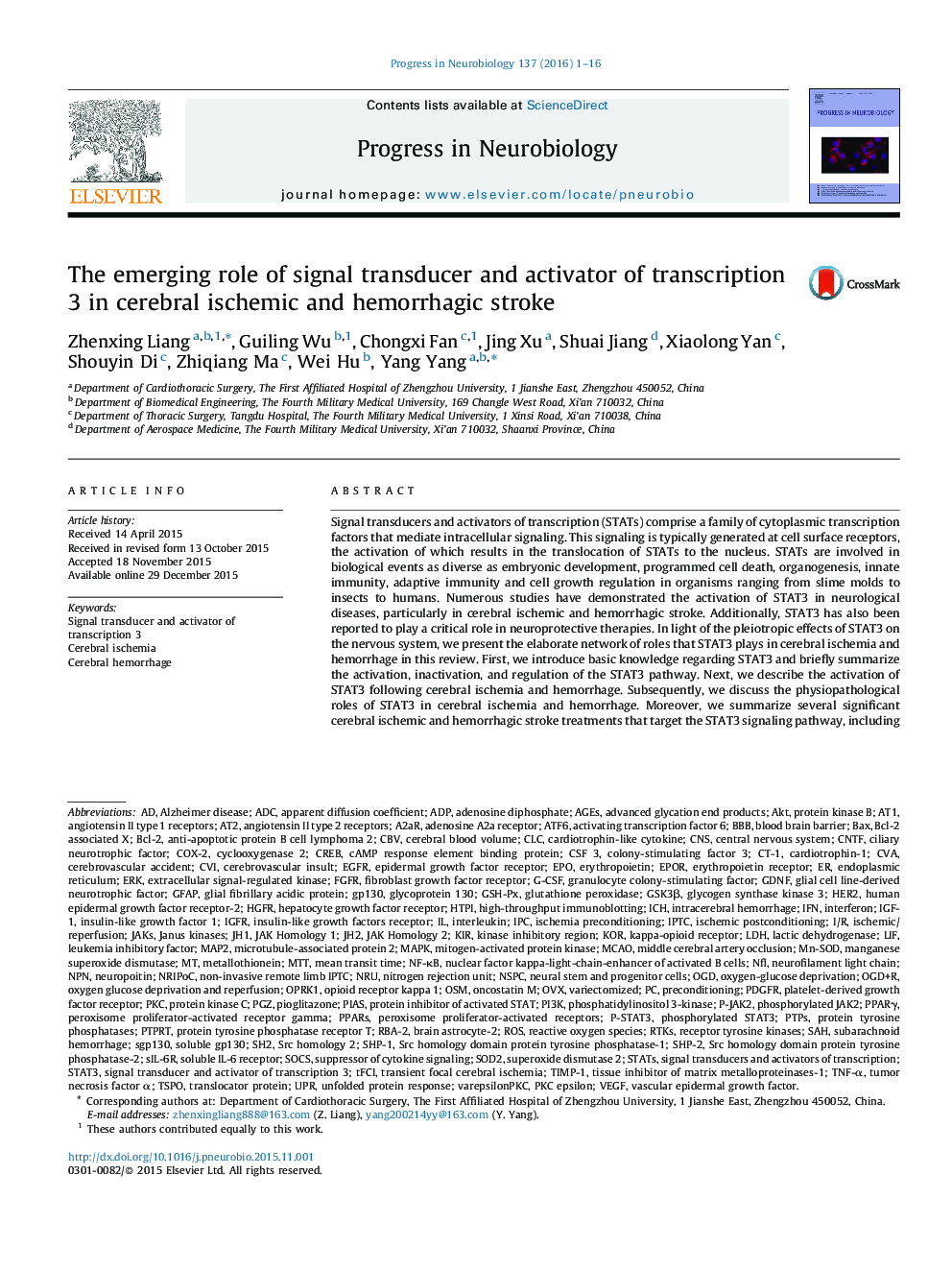| Article ID | Journal | Published Year | Pages | File Type |
|---|---|---|---|---|
| 4353251 | Progress in Neurobiology | 2016 | 16 Pages |
•Introducing basic knowledge on STAT3 and briefly summarize the activation, inactivation, and regulation of STAT3 pathway.•Describing the activation of STAT3 following cerebral ischemia and hemorrhage.•Summarizing several significant cerebral ischemic and hemorrhagic stroke treatments that target the STAT3 signaling pathway, including drug and physical therapy.•Discussing the physiopathological roles of STAT3 in cerebral ischemia and hemorrhage and highlighting research progress on STAT3 in stroke.•This review presents a comprehensive picture of the role of STAT3 in the nervous system and may contribute to the promotion of STAT3 as a new therapeutic target.
Signal transducers and activators of transcription (STATs) comprise a family of cytoplasmic transcription factors that mediate intracellular signaling. This signaling is typically generated at cell surface receptors, the activation of which results in the translocation of STATs to the nucleus. STATs are involved in biological events as diverse as embryonic development, programmed cell death, organogenesis, innate immunity, adaptive immunity and cell growth regulation in organisms ranging from slime molds to insects to humans. Numerous studies have demonstrated the activation of STAT3 in neurological diseases, particularly in cerebral ischemic and hemorrhagic stroke. Additionally, STAT3 has also been reported to play a critical role in neuroprotective therapies. In light of the pleiotropic effects of STAT3 on the nervous system, we present the elaborate network of roles that STAT3 plays in cerebral ischemia and hemorrhage in this review. First, we introduce basic knowledge regarding STAT3 and briefly summarize the activation, inactivation, and regulation of the STAT3 pathway. Next, we describe the activation of STAT3 following cerebral ischemia and hemorrhage. Subsequently, we discuss the physiopathological roles of STAT3 in cerebral ischemia and hemorrhage. Moreover, we summarize several significant cerebral ischemic and hemorrhagic stroke treatments that target the STAT3 signaling pathway, including pharmacological and physical therapies. Finally, we highlight research progress on STAT3 in stroke. This review presents the important roles of STAT3 in the nervous system and may contribute to the promotion of STAT3 as a new therapeutic target.
